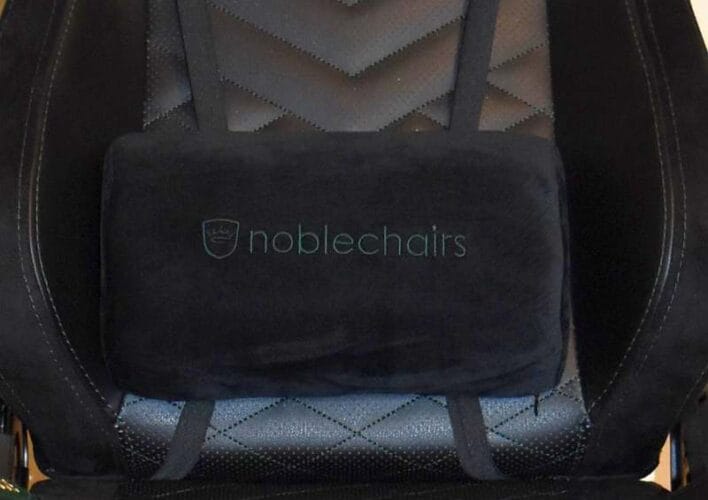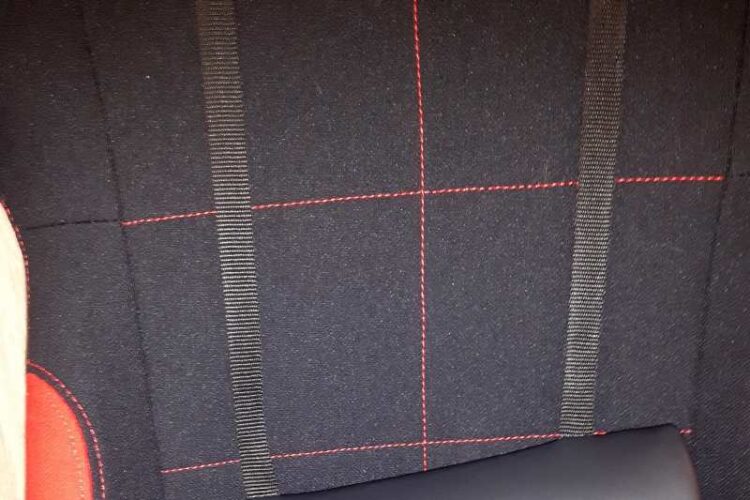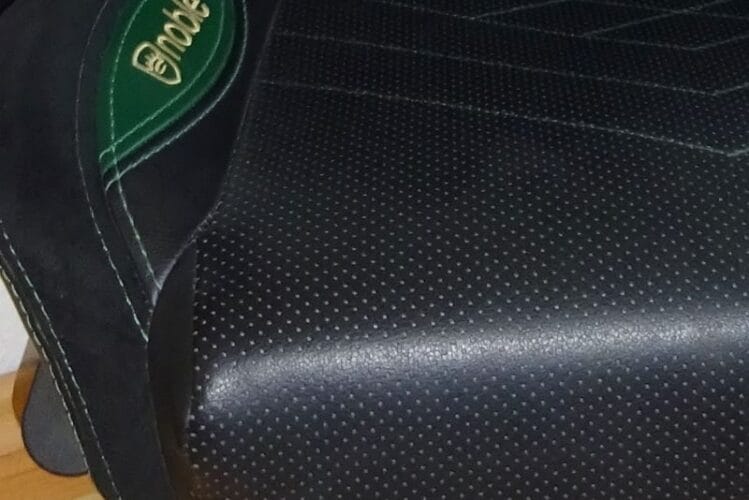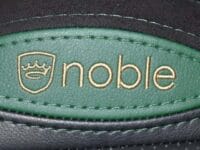 Daily work at the desk or extensive esports sessions require high-quality furniture to guarantee productivity and performance and to avoid health problems caused by excessive sitting. Modern gaming chairs differ in quality and the materials from which they are made. The material affects the ergonomic properties of the chair as well as the durability and lifespan of the chair. We take a closer look at the different cover and upholstery materials and their advantages.
Daily work at the desk or extensive esports sessions require high-quality furniture to guarantee productivity and performance and to avoid health problems caused by excessive sitting. Modern gaming chairs differ in quality and the materials from which they are made. The material affects the ergonomic properties of the chair as well as the durability and lifespan of the chair. We take a closer look at the different cover and upholstery materials and their advantages.
The cover materials used for Chair upholstery
The covers of the chair are the outer material that gives the chair its appearance and with which the user comes into contact. When it comes to the covers of your gaming chair, you have the choice between synthetic and natural materials.
The most common materials are synthetic materials such as mesh fabric covers, microfibre, and polyester fabrics, as well as synthetic leather fabrics made of polyvinyl chloride (PVC) and polyurethane (PU) and mixed fabrics made from the aforementioned plastics.
Among the covers made of natural material, you will primarily find genuine leather as well as cotton and linen.
What is the best material for chair covers?
Each of the materials used for the chair covers has advantages and disadvantages in terms of ergonomics, comfort, ease of cleaning, resistance, durability, what raw materials they are made of, and environmental aspects.

Fabric covers
Chairs with fabric covers are very popular and widespread. There is a variety of fabrics, from natural fibers such as cotton or viscose to synthetic fibers such as polyamide, polyester, polypropylene, and others. In order to optimize the robustness and material properties, mixed fabrics made of two or more fibers are often used to upholster chairs.
Synthetic fabrics and mixed fabrics have many good material properties such as abrasion resistance and shape retention, are light-resistant, and color-stable – the fabric does not fade even with frequent exposure to the sun.
Fabrics are also pleasant and comfortable to sit on, while not as breathable as mesh fabrics, they are still breathable and absorb moisture and dissipate it. On cold days they feel warm when sitting down in it and provide some insulation against cold.
Removing dust and particles is easy with a brush and a vacuum cleaner. Stains could be a problem though. Spills that cause stains need to be cleaned right away, using a damp cloth and upholstery cleaner.
Advantage: robust, comfortable, durable
Disadvantage: may accumulate dust and dirt particles, limited breathability depending on type of fabric
Origin: petroleum-based synthetic fiber or, in the case of higher-quality chairs, mixed fabrics made from natural and synthetic fibers
Cleaning and care: brush clean, use a vacuum cleaner against dust and dirt, wipe with a damp cloth, upholstery cleaner for stubborn stains
Microfiber
Desk chairs and other seating furniture such as sofas or car seats that are covered with microfibre are becoming increasingly popular. The microfibre fabrics are pleasantly soft, are very robust and durable, and are resistant to pilling, which makes them particularly easy to care for.
Microfiber fabrics are synthetic fibers made of polyester, polyurethane, and other polyamides. Microfibers are as the name suggests, extremely thin and fine, but still very tear-resistant and durable. The properties can vary depending on the material used for production. The result is an incredibly adaptable fabric with many advantages over fabrics made from natural fibers. For upholstery, a dirt and water-repellent version of microfiber is used, which is robust and soft. A high-quality imitation suede, “Alcantra”, is well known for the production of fashion accessories, and the interior of cars.
A material that has so many positive properties and is suitable for a wide range of products, such as microfiber towels, cleaning rags, mops, sportswear, and functional clothing through to upholstery covers, of course, also has its disadvantages.
It is a synthetic product which is made from mineral oil. Depending on the type of fiber, the combustion produces highly toxic gases, and worst of all, microfiber is not biodegradable. The fiber is so fine that it cannot be removed from sewage by sewage treatment plants. The result is that microfibers find their way through the rivers into the oceanic food chain, similar to other microplastics, and finally end up on our plates.
Advantages: pleasant on the skin, water and dirt repelling, durable and long-lasting, easy to care for
Disadvantage: more time-consuming removal of dried stains
Origin: Synthetic petroleum product, polyester and polymers,
Cleaning and care: use warm, distilled water, upholstery cleaner, wipe with a soft cloth, and vacuum cleaner
Mesh
Mesh is very breathable as a cover. The high air permeability is particularly beneficial in warm summers. Even if you sit for a long time, moisture build-up through sweating is limited. Mesh covers are easy to clean, they can be easily cleaned with a vacuum cleaner or duster.
As practical as the mesh chairs are in summer or on warm days, in winter when it is cold, the high air permeability can be a disadvantage. If you get cold easily, a blanket, fur, or a heated seat cushion is recommended on cold days.
Advantage: airy, breathable, easy to clean
Disadvantage: cold in winter
Material: polyester or blended fabric
Cleaning and care: vacuum with a vacuum cleaner or brush clean
Synthetic Leather

As the name suggests, artificial leather is an artificially produced material that mimics the appearance and properties of real leather. It is also referred to as faux leather which is derived from the French word “faux” for false. The biggest advantage of synthetic leather vs genuine leather is the much lower price. But despite the lower price, synthetic leather can look high quality and convey an executive shine and appearance.
However, synthetic leather does not have the properties of real leather, such as breathability and durability. The seating climate is noticeably different than in genuine leather chairs. But one must also note that there are big differences between cheaply made and high-quality synthetic leather. Really good synthetic leather approximates its material properties to real leather so that it can be quite difficult for the layman to tell a difference.
Artificial leather is robust and durable, stain-resistant, and easy to clean and care for. For ethical reasons (vegan) some people prefer it to real leather. However the production of artificial leather is not entirely harmless, as it is based on petroleum.
Advantages: cheaper than real leather, easy to care for, easy and versatile to process, not an animal product (vegan)
Disadvantage: cheap faux leather shows signs of wear quickly, not very breathable
Origin: petroleum-based product, textile fabric with laminates of soft PU or PVC
Cleaning and care: easy to clean, simply wipe it with a damp cloth
Genuine leather
Genuine leather covers give the chair an executive elegance and luxurious appearance. As a natural product, genuine leather has the advantage that it is breathable and can absorb and release moisture. This is noticeable in the seating comfort – you sweat significantly less. When processed well, leather is also extremely robust, tear-resistant, retains its shape, and looks good even after years of use. Real leather covers can be quite expensive since the production of animal skins is quite complex. The origin may cause conflicts in some people and they may prefer a product that is vegan.
Real leather looks great, is robust, and lasts longer, but it requires a bit more maintenance than other materials so it stays that way. It needs regular care with a leather conditioner to prevent the leather from drying out, becoming brittle, and cracking. Fresh spills and stains should be wiped off right away to avoid them drying up and forming hard-to-remove stains. Deep cleaning of genuine leather should be done by professionals.
Advantage: durable, robust, executive appearance
Disadvantage: expensive, not animal-friendly
Origin: animal skin
Cleaning and care: fresh stains can usually be easily wiped off, stubborn dirt needs special cleaning methods
Padding and Cushioning
The quality of the foam padding of a gaming or office chair is crucial for its comfort. Long sessions at the desk make the optimal choice of hardness and material of the upholstery even more important. The density of the foam and how it impresses and deflects back to the original shape have a significant influence on how soft or hard the chair appears. The most sensible choice depends on individual body weight. Heavy people benefit from harder padding, while lightweight occupants choose softer padding.
Soft vs. hard padding – what’s best?
Too soft upholstery can lead to the user’s mobility being restricted because it sinks in too deep. In addition, sinking too deep into too soft padding leads to an obstruction of the heat exchange between the body and the room air. The result is heat build-up, sweating, and uncomfortable sitting.
Too hard padding will also cause problems. There is no even distribution of pressure, it can lead to pressure points that can be uncomfortable or even painful in the long term. The result is a constant change of sitting position looking for relief.
Bodyweight must be taken into account when choosing the right padding.
Padding Quality
In order to determine the quality of upholstery foam, one refers to the Density or the weight (which is proportional to the density) of the foam and its Indentation load deflection (ILD).
Density
The density is the quotient of the mass of a body and its volume
d = m / V
Foam density is expressed in pounds per cubic foot (lbs/cu ft).
The higher the density, the heavier the upholstery and, as a rule, the more firm, the harder you seem to be sitting.
In addition to the density, the compressibility (compression strength) of the foam expressed in indentation force deflection or Indentation load deflection (ILD) is another important criterion for assessing foams. A material that is too soft will not give the body enough support, while a material that is too hard offers not enough in terms of sitting comfort. The ILD indicates how much force is necessary to compress the foam by 25% of its original height. The higher the ILD, the firmer the foam.
Compressibility and rebound
The compressibility (compression strength) of the foam is expressed in indentation force deflection or Indentation load deflection (ILD).
ILD is a measure of how much pressure is required to compress the foam in its thickness. The ILD value indicates how many pounds of weight it takes to compress a foam to 75 percent of its original thickness.
For example, if your seat cushion is 4 “thick and has an ILD rating of 50, it means that it takes 50 pounds of pressure to compress the cushion to 3”. An ILD value of 50 is quite high such a firmness would be more suitable for heavy people.

Properties Of Chair Covers
If you want to buy a new gaming or office chair, the question of the cover and the upholstery inevitably arises. Here again a recap of the most important points to consider
Material durability and Shape retention
How resistant is the material with daily use, does the upholstery keep its shape, is it hard enough not to wear out too quickly
Flammability
Is the material easily flammable or rather incombustible?
Light resistance
Does the cover fade when exposed to sunlight?
Breathability
How breathable is the material? Does it absorb and release moisture?
Pilling
How robust is the material, is it abrasion-resistant, is it prone to pilling,
Dirt-repellent behavior
Does the material attract dust and dirt, it is easy to keep clean, is the material is dirt and water-repellent
So which cover material is the best?
It’s hard to say which material is really the best. Much depends on the price. Genuine leather has many advantages and objectively speaking it is pretty much the best material if you take all its properties into account. Leather simply offers the best quality and durability. The disadvantage is the slightly higher care to maintain its properties and appearance, as well as the fact that it is of animal origin. The higher price is justifiable considering the long lifetime.
Faux leather is available in many qualities and at very affordable prices. Very cheap synthetic leather tough needs to compromise on comfort and quality and durability. Premium faux leather, however, is of a high standard and not only has the appearance of genuine leather but even similar features. There are many points in favor of artificial leather if you consider all the properties
Covers made of fabric or microfiber are also a good alternative, after all, most of the chairs in the world are covered with fabric, and for many good reasons. Fabrics feel pleasant on the skin and ensure a friendly seating climate, warm in winter, and breathable in summer on warm days.
A good quality foam of padding is essential for comfortable sitting. The foam should be firm so that you don’t sink in unnecessarily deep. In addition, it needs enough elasticity so that it is retained in its original shape and it is not worn out too soon. A good high-density cold molded foam may add a bit to the purchase price of the chair but the investment will be worth it.



